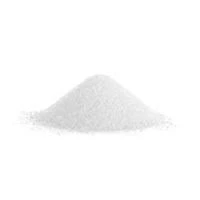
Innovative Reagents for Enhanced Froth Flotation Performance and Efficiency in Mineral Processing
Froth Flotation Reagents Key Players in Mineral Processing
Froth flotation is a widely used method for separating valuable minerals from ores. This process relies heavily on the use of flotation reagents, which are chemical substances added to the flotation system to enhance the separation of minerals. These reagents play a crucial role in modifying the properties of mineral surfaces, thereby improving the efficiency and selectivity of the flotation process.
Types of Flotation Reagents
The primary categories of flotation reagents include collectors, frothers, modifiers, and activators. Each type of reagent serves a specific purpose in the flotation process.
1. Collectors These are the most critical flotation reagents, as they enhance the hydrophobic properties of minerals, allowing them to attach to air bubbles and float to the surface. Common collectors include xanthates, dithiophosphates, and fatty acids. The choice of collector depends on the type of mineral being processed. For instance, xanthates are commonly used for sulfide minerals, while fatty acids are typically used for non-ferrous minerals like phosphates and carbonates.
2. Frothers Frothers are added to stabilize the froth created during the flotation process. They reduce the surface tension of the water, enhancing bubble formation and stability. Common frothers include methyl isobutyl carbinol (MIBC), pine oil, and polyethylene glycol. The optimal frother not only aids in bubble generation but also helps in preventing bubble collapse, thus ensuring that the valuable minerals remain on the froth surface for collection.
3. Modifiers Modifiers are used to alter the pH of the flotation slurry or to modify the surface properties of the minerals. These include pH regulators (such as lime or sulfuric acid) and dispersants, which prevent the agglomeration of particles. By controlling the pH and modifying the mineral surface, modifiers can enhance the effectiveness of collectors and frothers.
4. Activators Certain minerals may require an activator to increase their response to collectors. Activators are substances that enhance the activity of collectors on specific minerals, often by changing the surface chemistry. For instance, the use of copper sulfate helps activate sphalerite, allowing it to respond better to xanthate collectors.
froth flotation reagents

Selecting the Right Reagents
Choosing the appropriate reagents for a flotation process is crucial for optimizing the recovery of valuable minerals. The selection process is typically based on a thorough understanding of the mineralogical characteristics of the ore, including the presence of gangue minerals, particle size distribution, and the mineral's surface chemistry.
Lab-scale flotation tests are usually conducted to evaluate different reagent combinations and their effectiveness. These tests help in determining the optimal reagent regime that balances recovery and grade.
Environmental Considerations
With increasing environmental regulations and a push towards sustainable mining practices, the selection and use of flotation reagents have come under scrutiny. The industry is seeing a shift towards more environmentally friendly reagents and alternative methods. Research is ongoing to develop bio-based collectors and frothers that can reduce the environmental footprint of flotation processes.
Conclusion
Froth flotation reagents are integral to the mineral processing industry, enabling the efficient separation of valuable minerals from ores. The careful selection and application of collectors, frothers, modifiers, and activators can significantly impact the overall success of the flotation process. As the industry moves towards more sustainable practices, the innovation in flotation reagents and methodologies will play a vital role in shaping the future of mineral extraction. Understanding the dynamics of these reagents not only enhances recovery rates but also contributes to environmental stewardship in mineral processing.
-
Sodium Dichloroisocyanurate Safety Handling ProtocolsNewsJul.29,2025
-
Mining Chemicals for Copper Extraction Processes GuideNewsJul.29,2025
-
Fertilizer for Sale Shipping and Storage TipsNewsJul.29,2025
-
Dimethyl Disulfide as Sulfurizing AgentNewsJul.29,2025
-
Benzotriazole Safety Data Handling and Storage GuidelinesNewsJul.29,2025
-
Ammonium Bicarbonate Safety Handling Storage GuidelinesNewsJul.29,2025
-
The Transformative Role Of Trichloroisocyanuric Acid in Water TreatmentNewsJul.23,2025
Hebei Tenger Chemical Technology Co., Ltd. focuses on the chemical industry and is committed to the export service of chemical raw materials.
-

view more DiethanolisopropanolamineIn the ever-growing field of chemical solutions, diethanolisopropanolamine (DEIPA) stands out as a versatile and important compound. Due to its unique chemical structure and properties, DEIPA is of interest to various industries including construction, personal care, and agriculture. -

view more TriisopropanolamineTriisopropanolamine (TIPA) alkanol amine substance, is a kind of alcohol amine compound with amino and alcohol hydroxyl, and because of its molecules contains both amino and hydroxyl. -

view more Tetramethyl Thiuram DisulfideTetramethyl thiuram disulfide, also known as TMTD, is a white to light-yellow powder with a distinct sulfur-like odor. It is soluble in organic solvents such as benzene, acetone, and ethyl acetate, making it highly versatile for use in different formulations. TMTD is known for its excellent vulcanization acceleration properties, which makes it a key ingredient in the production of rubber products. Additionally, it acts as an effective fungicide and bactericide, making it valuable in agricultural applications. Its high purity and stability ensure consistent performance, making it a preferred choice for manufacturers across various industries.











